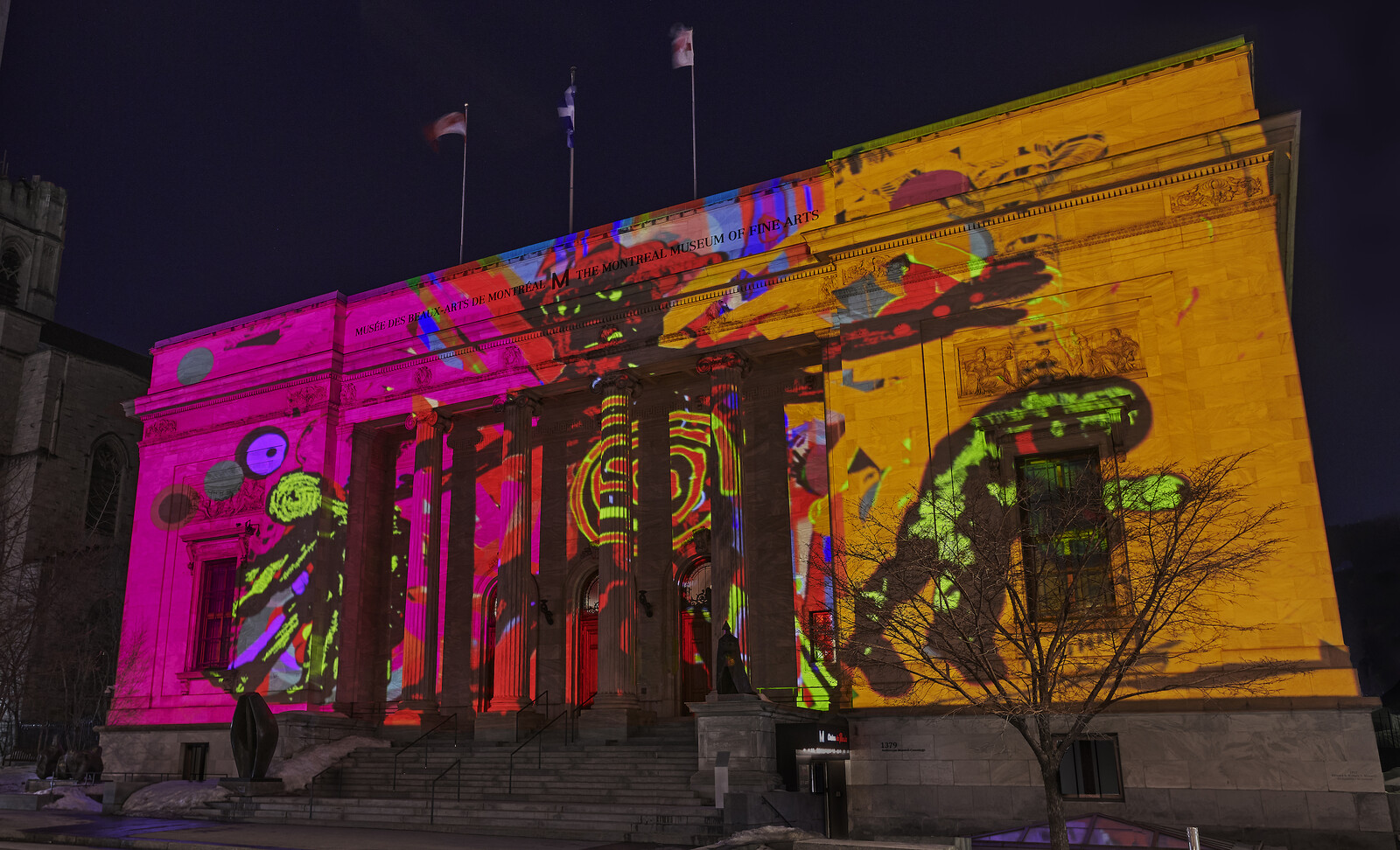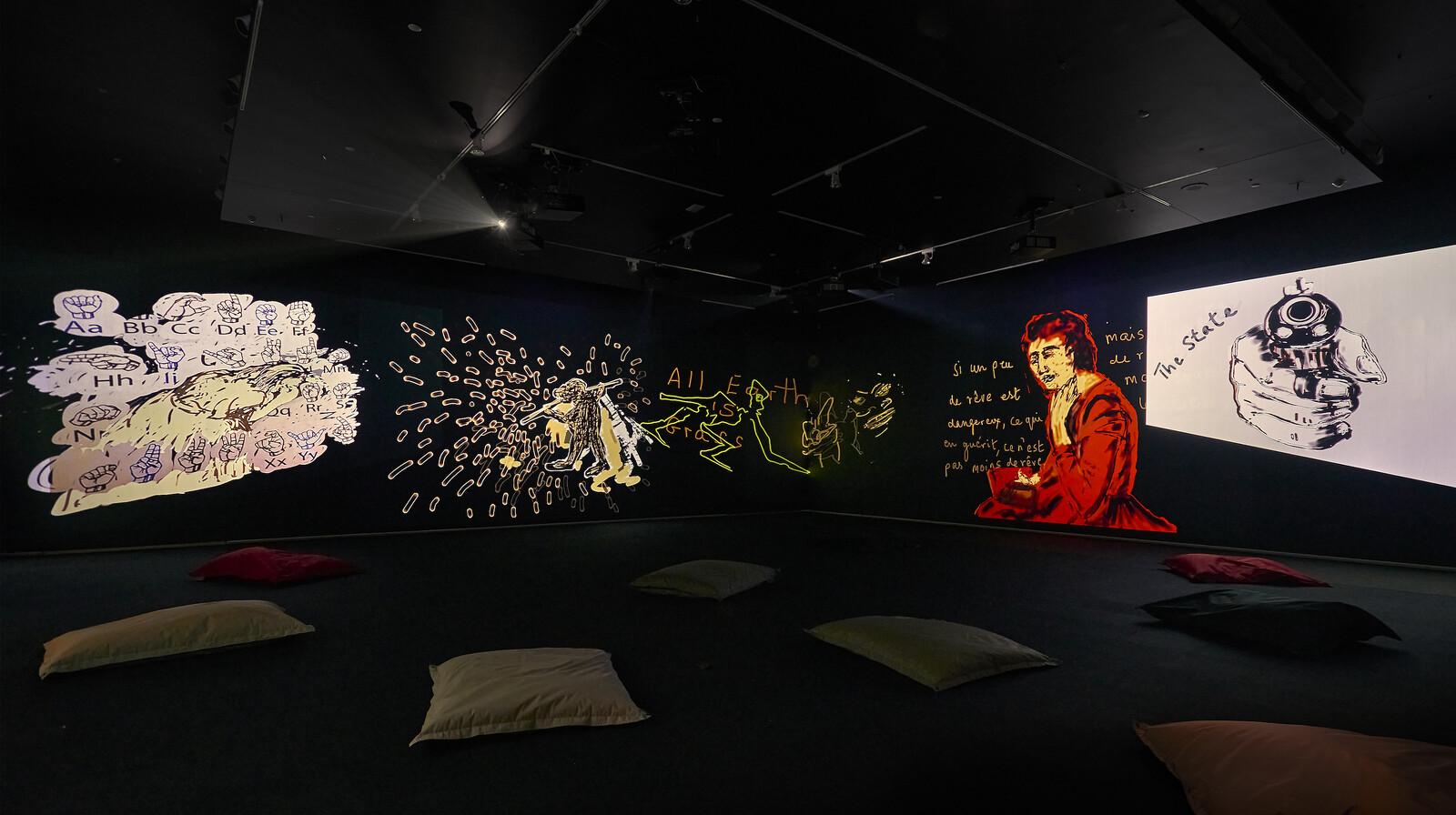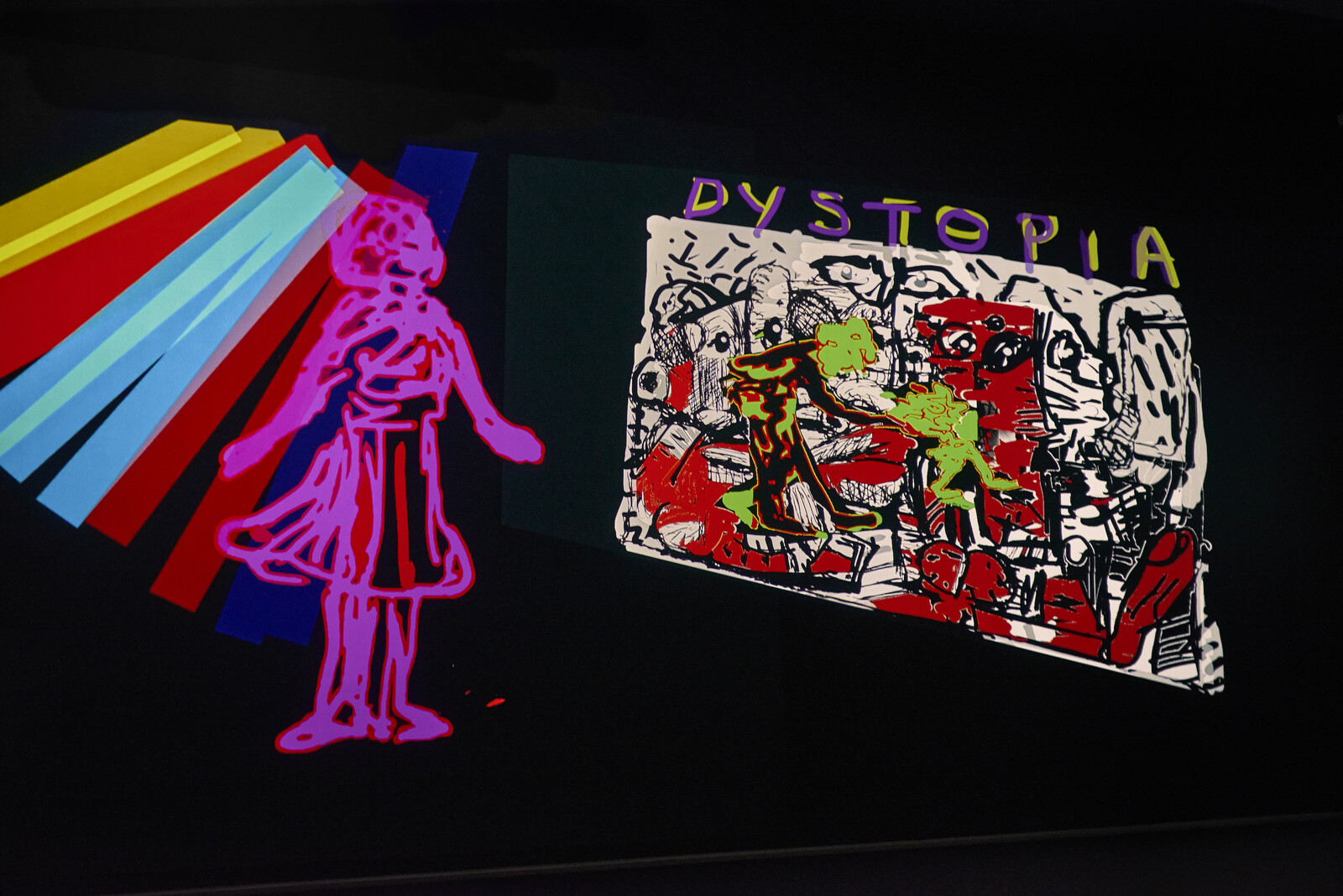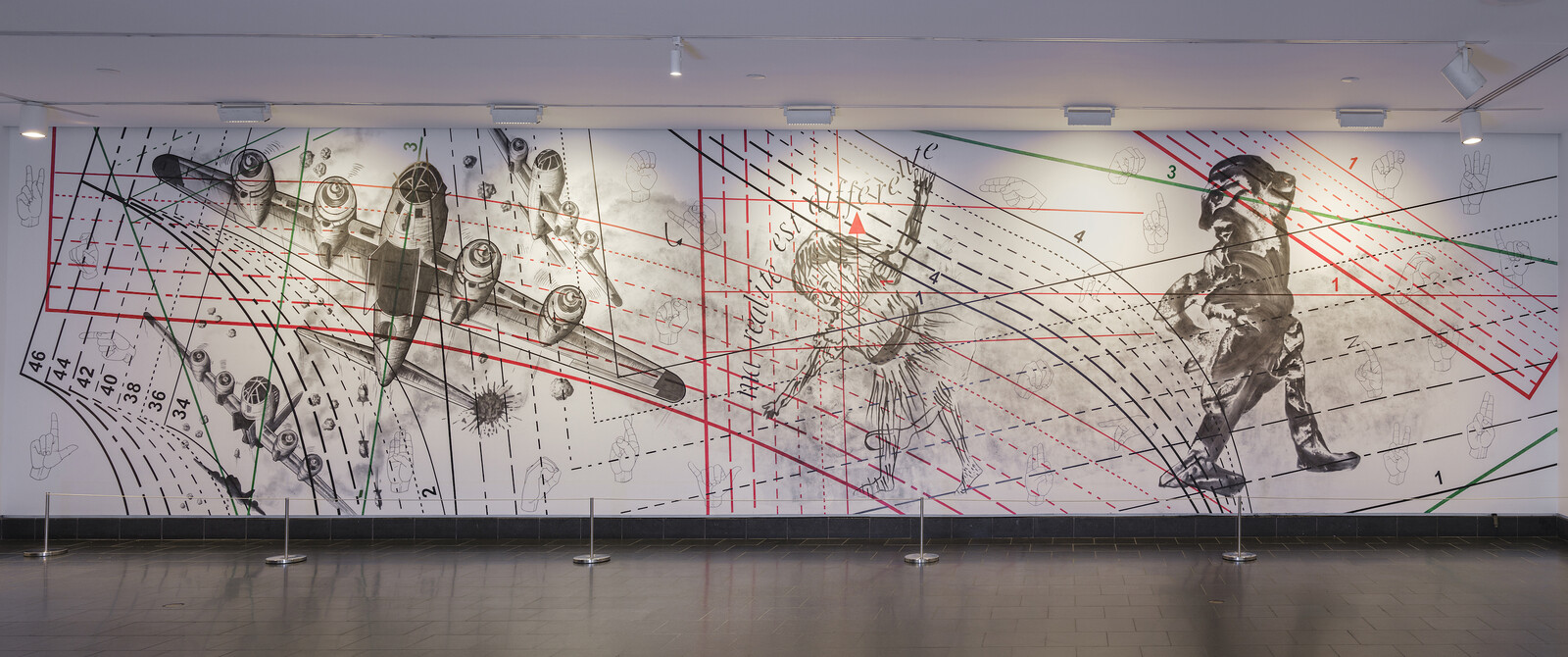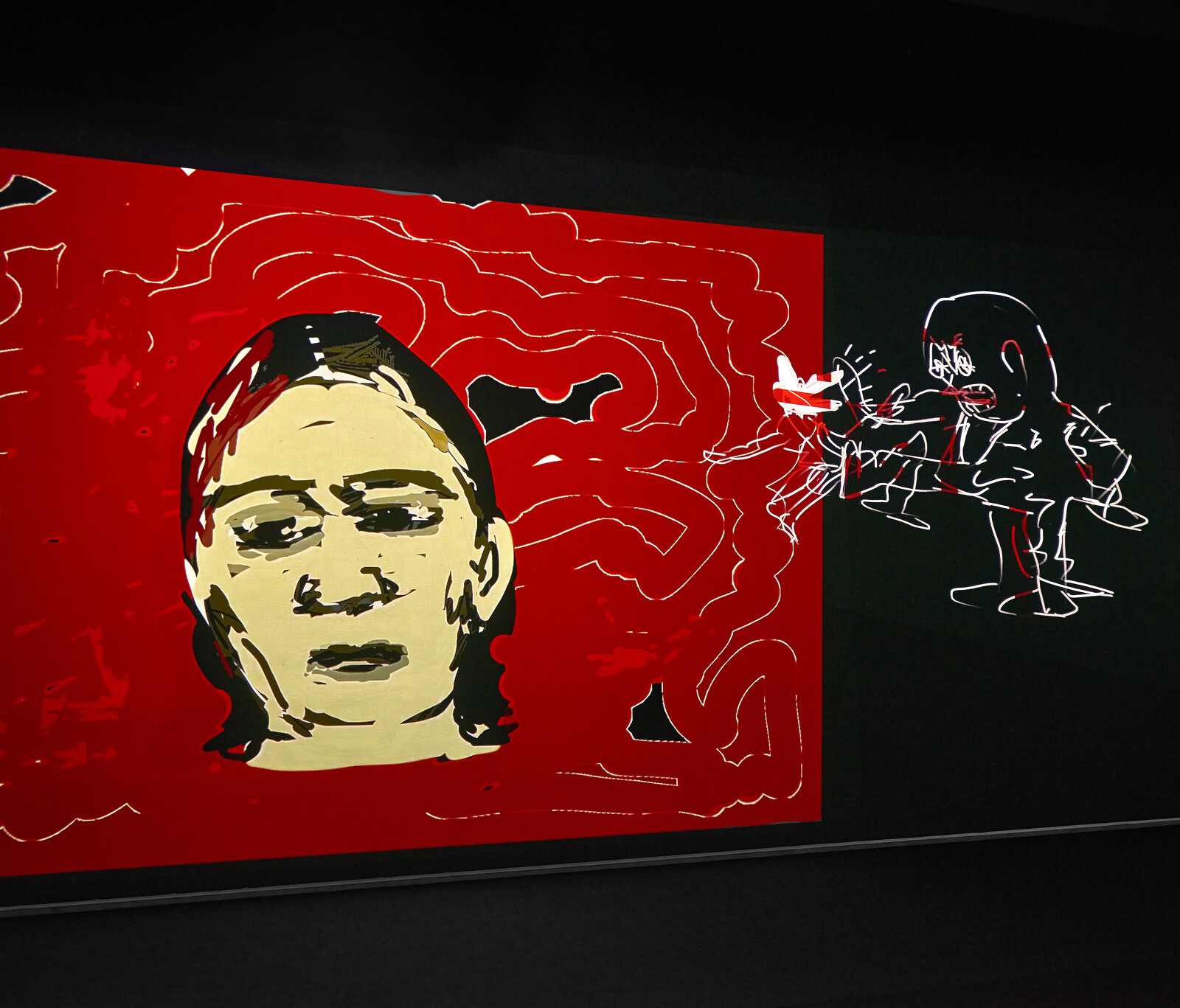After more than fifty years as a pioneering video and installation artist, Nalini Malani maintains a rigor, criticality, and joy that transcends her work’s challenging subject matter. Given that this is the Karachi-born Indian artist’s first solo exhibition in Canada, it’s a curiously small sampling of projects, but nonetheless encompasses the conceptual approaches for which she is best known: strong feminist and activist perspectives on issues related to gender, race, bodily autonomy, and democratic rights; highly charged source material drawn from current or historic events; diverse literary references combined with shadowy, impressionistic figuration to produce immersive video environments; and an ongoing concern with erasure as both aesthetic device and political gesture.
Can You Hear Me? (2018–20) is the centerpiece here, a nine-channel installation comprised of eighty-eight individual iPad animations projected across three walls. Each short segment repeats its own brief narrative in frenzied, arhythmic patterns, and is accompanied by a musical score that ranges from soaring and dramatic to cacophonous to (sometimes) barely audible. It’s a tumultuous and relentlessly dynamic experience, with no single focal point. Much like a painted or sculpted frieze, there is no distinguishing one vignette from the next, no firm contours to scenes that bleed across the space. Hand-drawn figures and borderline-illegible handwriting recall chalk on a blackboard or the sketchy stylings of political cartoons—both broad references to institutions of culture that transform information into knowledge.
The work is based on the horrendous story of a gang rape and death of an eight-year-old girl from a nomadic Muslim community in the Indian region of Jammu and Kashmir in 2018. Several police officers and a temple priest were among those convicted of a crime that sparked widespread outrage across India. In Can You Hear Me? nearly all the narrative scenes address forms of violence that are either directly (“she was blinded by pellets,” “she was brutally raped”) or obliquely (sexualized images of a girl recalling Lewis Carroll’s Alice, scenes suggestive of police beatings, crudely rendered figures coming apart) related. Despite its subject matter and the frequent allusions to gender- and state-based violence, it is mesmerizing to watch. Violent gestures exist alongside silly or futile ones. Poetic texts are combined with political imperatives demanding action. Disturbing references are conveyed with bright colors and abstract signifiers. Malani’s stop-motion mash-up of referents does not draw an easy distinction between the extremes of brutality of which humans are capable and the paradoxical beauty of poetry, art, and literature that address such violence. In a dark space filled with shifting colors and sounds, viewers become implicated by the immersive experience, which demands that one decipher individual narratives of violence—those that are too often erased from official or more entrenched histories—while simultaneously being lulled into the rhythms and repetition of the many concurrent scenes.
Malani’s newest work, Ballad of a Woman (2023), is a commission for the building’s exterior, continuing her experiments with large-scale video in public space. Its inspiration is Polish poet Wisława Szymborska’s “Ballad” (1962), in which a woman is murdered and, in her afterlife, cleans up the traces of her own death, thereby protecting her killer. The influences are specific, but the modes of representation are abstract: angular, geometric shapes, bright color blocks, scrawled line drawings, figures that convey a feeling of containment even as they spill out across an entire façade. The literary narrative is too subtle to recognize at this scale, but the work does monumentalize acts of erasure, even self-erasure, suggesting the ways in which women often retract themselves in order to survive.
Erasure is the most striking common element of the exhibition’s trio of works. The in-situ wall drawing from the series City of Desires—Crossing Boundaries (1992–2023), drawn onsite by the artist along with Montréal artists Iuliana Irimia and Cassandra Dickie, takes erasure at its most literal: it will be scrubbed off during a performance that will conclude the show. Likewise, in the video works, we watch in what feels like real time as Malani digitally erases and re-draws so many scenes containing historical, mythological, or literary referents. It’s not unnoticed that she draws upon the texts of many “great men”—Samuel Beckett, Bertolt Brecht, Noam Chomsky, Lawrence Ferlinghetti, Paul Klee, George Orwell, and Marcel Proust are among those named in the didactics—while the subjects of her works are often women, often unnamed. That itself is potent commentary on how cultural power operates in the gendering of history, still so frequently produced from the perspectives of men.
Which is what makes Malani’s legacy, and her continuing commitment to politically charged work, so important now. Even as immersive video environments—a format that she essentially created decades ago—have become overly familiar in contemporary art, and also in brand marketing, Malani’s work maintains its power through the boundless material qualities of the spatialized moving image, “the overspill into something that is both inside and outside the frame.”1 It is the excesses of history, the stories that fall outside dominant discourses, the images that spill beyond the screen, that form the material of her most compelling critiques. By truly immersing viewers in her work, Malani makes us accountable to the facticity of violence, and the beauty it can simultaneously engender.
Ashish Rajadhyaksha, “Spilling Out,” Third Text, vol. 17, issue 1 (2003): 53–61.

